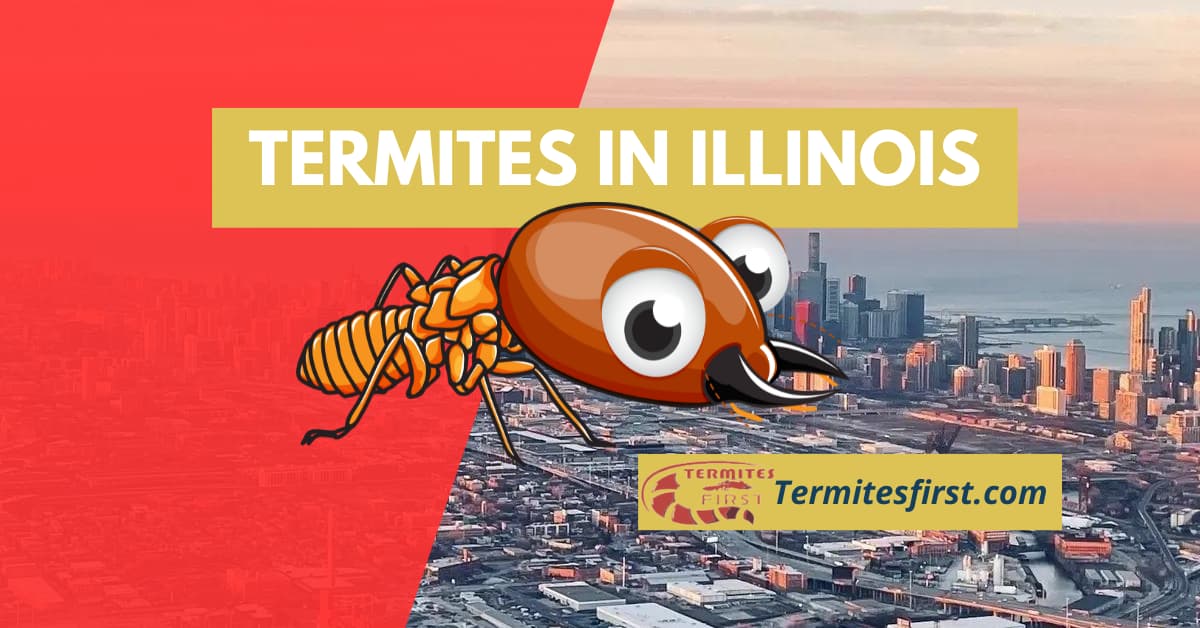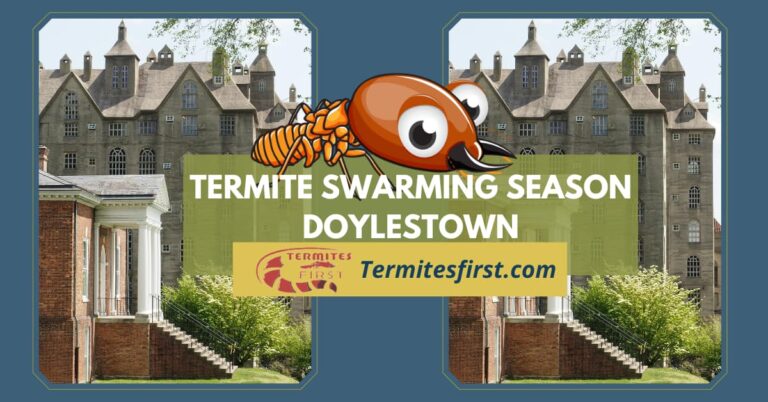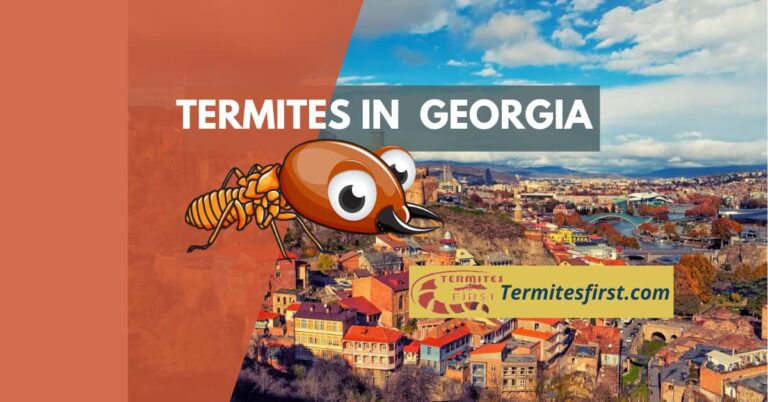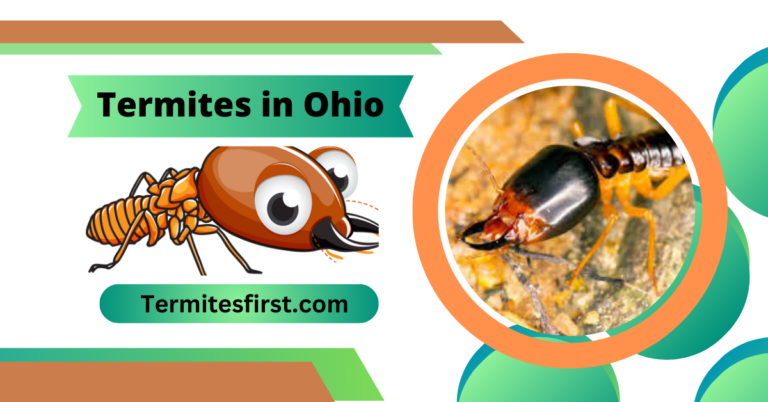Termites in Illinois: Essential Tips to Protect Your Home
Did you know that termites cause over $5 billion in property damage each day in the U.S. in tons of ways and things each year? Living in Illinois, I’ve seen firsthand how these pests, including winged termites and termite droppings, can wreak havoc on homes with little termite damage that could have been prevented by a termite inspection. Termites in Illinois are more than just a nuisance; they can seriously impact your property value and safety.
I understand the urgency for termite protection to protect your home from these destructive insects like subterranean termite and worker termites that may come from a termite nest. Knowing the signs of a termite problem and taking preventive measures against subterranean termite infestations is crucial for every homeowner. In this post, I’ll share essential tips on identifying termites, effective treatments, and ways to keep them at bay.
Key Takeaways
- Termites are a significant threat in Illinois, particularly Eastern Subterranean termites, which are the most common type found in the area. Be aware of their presence to protect your home.
- Look for signs of infestation such as mud tubes, discarded wings, and hollow-sounding wood. Early detection can save you from costly repairs.
- Implement effective prevention strategies, like sealing cracks and maintaining a dry environment, to deter termites from entering your home.
- Schedule regular inspections with pest control professionals to catch any termite activity early and address it promptly.
- After an infestation, conduct necessary home repairs immediately to prevent further damage and discourage new termite colonies.
- Store firewood at least 20 feet away from your home and elevate it off the ground to reduce the risk of attracting termites.
Understanding Termite Presence in Illinois

Prevalence
Termites are a common issue in Illinois. The state has a high termite problem due to its climate and soil conditions. According to the University of Illinois Extension, both eastern subterranean termites and drywood termites thrive here. These pests can cause significant damage to homes. In fact, they are responsible for billions of dollars in property damage each year across the United States.
I have seen firsthand how devastating a termite infestation can be. A friend of mine lost thousands of dollars when termites damaged her home’s foundation. This experience taught me the importance of early detection and prevention.
Environmental Conditions
Illinois has an ideal environment for termites. The warm summers and mild winters create a favorable climate. Moisture is also a key factor; termites need it to survive. Areas with high humidity levels, like basements and crawl spaces, attract these pests.
The soil type in Illinois further contributes to termite activity. Clay soils retain moisture better than sandy soils, making them perfect for termite colonies. Homeowners should be aware of these conditions. Simple measures like ensuring proper drainage can help reduce the risk of infestations.
Awareness
Understanding different types of termites is crucial for homeowners. Eastern subterranean termites are the most common in Illinois. They live underground and build mud tubes to access food sources above ground. Recognizing these tubes can help in identifying an infestation early.
Drywood termites, although less common, can also be found in Illinois. They do not require contact with the soil and can infest wooden structures directly. Knowledge about their behaviors is essential for effective termite protection strategies.
Homeowners should regularly inspect their properties for signs of termite activity. Look for discarded wings, mud tubes, or hollow-sounding wood. I always recommend checking areas around windows and doors since these are prime entry points.
Routine pest control services can provide peace of mind. Professionals can identify potential risks and offer solutions tailored to specific properties. Early intervention is key to preventing extensive damage from a property termite infestation.
Eastern Subterranean Termites Overview
Habitat Preferences
Eastern subterranean termites thrive in moist environments. They prefer areas close to water sources, such as rivers or leaking pipes. These conditions provide the needed moisture for their survival. I often notice that homes with poor drainage are more prone to termite invasion.
These termites build their colonies underground. Their nests can be found in soil, wood, or even under concrete slabs. The presence of mud tubes is a clear sign of their activity. These tubes serve as highways for the termites. They help them move between their nest and food sources while protecting them from predators.
Nesting Behavior
Subterranean termite colonies consist of several types of termites. The colony includes workers, soldiers, and swarmers. Termite workers are responsible for foraging for food and building tunnels. They often access homes through cracks in foundations or gaps around pipes.
I have seen firsthand how quickly these pests can enter a home. A small crack can lead to a significant infestation if not addressed promptly. Once inside, they can cause serious damage before homeowners even realize they are there.
Damage Potential
A subterranean termite infestation can lead to severe structural damage. Termites consume wood, paper, and other cellulose materials. This behavior can weaken the foundation of a house over time. Homeowners may face costly repairs if the problem goes unchecked.
The implications of a termite infestation are significant. Most homeowners do not realize they have a problem until it’s too late. Regular inspections can help identify potential issues early on. Taking proactive measures is essential to prevent extensive damage.
In my experience, understanding the signs of termite activity can save homeowners a lot of money and stress. Recognizing mud tubes and discarded wings from swarmers can alert you to an issue before it escalates.
Insights on Drywood and Formosan Termites
Drywood Termites
Drywood termites are different from eastern subterranean termites. They nest within the wood they consume. This leads to localized damage in wooden structures. Their infestations can be hard to detect until significant damage occurs. I find it interesting how these pests can live without contact with the soil.
These termites produce small piles of droppings, which are a sign of their presence. The droppings look like tiny pellets and can often be found near infested wood. Spotting these droppings during termite inspections can help identify potential termite infestations early.
Formosan Termites
Formosan termites are known for their rapid destructive capability. They can cause extensive damage quickly due to their large colonies. These termites also have unique feeding habits that allow them to consume a variety of materials, including wood and paper products. Their ability to chew through materials is impressive.
In my experience, Formosan termites are aggressive feeders. They can eat up to 13 times faster than other termite species. This makes them a serious threat to homes and buildings. Homeowners should be aware of this risk, especially in areas where they are found.
Rarity in Illinois
In Illinois, drywood and Formosan termites are rare compared to eastern subterranean termites. Most termite problems in the state stem from the eastern variety. This means that while drywood and Formosan termites exist, they do not pose as significant a threat here.
Homeowners should focus on preventing eastern subterranean termites instead. Regular termite inspections can help catch infestations early. It’s crucial to check for signs of termite damage around the foundation and wooden structures.
Preventing Termite Problems
Preventing termite issues requires vigilance and proper maintenance. Here are some effective tips:
- Keep wood piles away from the house.
- Seal cracks in foundations and walls.
- Ensure proper drainage around the home.
- Remove moisture sources, like standing water.
Taking these steps can help protect your home from potential termite infestations.
Recognizing Signs of Infestation
Termite Signs
Identifying termite signs is crucial for early detection. One clear indicator is the presence of mud tubes. These tubes are made from soil and wood particles. They provide termites with protection as they travel between their nests and food sources.
Another sign is discarded wings. After mating, swarmers shed their wings. Finding these wings near windows or doors can signal a nearby infestation.
Wood Damage
Wood damage often indicates a problem with termites. Termites consume wood from the inside out. This makes it hard to notice until significant damage occurs. I once found soft spots in wooden beams in my home. It was alarming to realize that termites had been eating away at them for months.
Peeling paint can also be a sign of an infestation. This happens when moisture builds up due to wood damage. The paint loses its grip and starts to peel off. If you see this in your home, it’s time to investigate further.
Cracks and Nests
Cracks in walls or foundations may also suggest termite activity. These pests can enter through tiny openings. Inspecting these areas regularly helps catch infestations early.
Nests are another concern. Some species build nests in wood, while others create them underground. Knowing where these nests are located can help in pest control efforts.
Monitoring Areas
Vigilance is key in monitoring for these signs. Regular inspections of your home can prevent major issues later on. I make it a habit to check the basement and crawl spaces every few months. It’s easy to overlook these areas, but they are prime spots for pest activity.
Look for droppings as well. Small pellets resembling grains of sand can indicate termite presence. Noticing these signs quickly can save a ton of damage and repair costs.
Types of Infestation
Understanding the different types of infestations is important too. Subterranean termites are common in Illinois and cause extensive damage underground. Drywood termites, while less common, can still affect structures significantly.
Being aware of these species helps in recognizing what signs to look for. Each type has unique characteristics that aid in identification.
Effective Prevention Strategies
Regular Inspections
Regular inspections by pest control professionals are crucial. These experts can identify signs of termites early. They know where to look and what to check. I find that scheduling these inspections at least once a year is beneficial. It helps catch any potential problems before they escalate.
Termites can cause significant damage if left unchecked. Their presence often goes unnoticed until it’s too late. A professional can provide guidance on specific areas to monitor closely. This proactive approach can save homeowners from costly repairs later.
Sealing Entry Points
Sealing entry points is another effective strategy. Termites often enter homes through small cracks and gaps. Inspect the foundation, windows, and doors for vulnerabilities. I remember sealing gaps in my old house, which made a noticeable difference in keeping pests out.
Repairing structural weaknesses is also essential. Damaged wood or siding can attract termites quickly. Homeowners should replace any compromised materials promptly. This action minimizes the risk of an infestation.
Maintaining Cleanliness
Maintaining a clean environment around the home deters termites effectively. Keeping wood piles away from the foundation is important. Termites thrive in damp, decaying wood, so removing debris helps reduce attraction.
Ensure gutters are clean and functioning properly. Clogged gutters can cause water to pool near the foundation, creating a perfect habitat for termites. Regular yard maintenance can prevent moisture buildup and keep your home safe.
Professional Control Options
Despite taking preventive steps, termite infestations can still happen. When this occurs, it’s essential to seek help from professional pest control services. These specialists employ a range of techniques to successfully eradicate termites.
They may apply liquid treatments or bait systems around the home’s perimeter. Liquid treatments create a barrier that prevents termites from entering. Bait systems attract termites and eliminate entire colonies over time.
Daily Monitoring
Daily monitoring can also help in termite prevention. Look for signs like mud tubes or discarded wings after swarming season. Staying alert allows homeowners to act quickly if they notice anything unusual.
I suggest keeping a checklist for regular inspections and maintenance tasks. This practice ensures nothing gets overlooked, reducing the chances of an infestation.
Importance of Regular Inspections
Early Detection
Regular inspections are vital for catching termite infestations early. Termites can cause significant damage before homeowners even notice them. I remember a neighbor who faced costly repairs because they waited too long to check for termites.
Professional inspectors have the training to spot signs that are hard for an untrained eye to see. They know where to look and what to look for. This expertise helps in identifying potential issues before they escalate.
Hidden Damage
Termites often hide in walls or under floors. Many homeowners may not realize the extent of the damage until it is too late. A thorough inspection can reveal hidden damage that could compromise the structure of a home.
I once learned about a family that discovered extensive damage behind their drywall during a routine inspection. It was shocking to see how much destruction had occurred without anyone knowing. This example shows how crucial it is to have professionals assess your property regularly.
Peace of Mind
Knowing that your home is protected from termites brings peace of mind. Regular inspections help ensure that any problems are addressed quickly. Homeowners can feel secure, knowing they have taken proactive steps to protect their investment.
With professional inspections, I find comfort in knowing that experts are looking out for my home’s safety. The reassurance of having a plan in place makes me feel more confident about my living space.
Cost-Effective Solutions
Investing in regular termite inspections can save money in the long run. The cost of repairing termite damage can be far higher than the price of prevention. Homeowners should consider the potential savings when deciding on inspection frequency.
Many pest control companies offer plans that include regular inspections and treatments. These options help maintain a barrier against termites and reduce the likelihood of infestations.
Recommended Frequency
Experts recommend having termite inspections at least once a year. For homes in high-risk areas, more frequent checks may be necessary. Keeping track of these inspections is important for maintaining a safe environment.
I keep a calendar reminder for my annual inspection date. This simple step ensures I never forget and helps me stay on top of my home’s maintenance needs.
Conducting Home Repairs Post-Infestation
Assessing Damage
After discovering a termite infestation, the first step is to assess the damage. Check all areas of your home where termites may have caused issues. This includes wooden beams, floors, and furniture. I found it helpful to take notes on the extent of the damage. This record can guide you during repairs.
Once you identify the affected areas, determine whether structural repairs are needed. If critical support beams are compromised, consider hiring a professional. They can provide a thorough evaluation and ensure your home remains safe.
Choosing Materials
Using treated wood is essential when making repairs. Treated wood has been chemically altered to resist termites and decay. It lasts longer than untreated materials in areas prone to moisture.
Other materials like composite decking or metal can also be effective. These options are naturally resistant to termites. I recommend discussing material choices with a contractor who understands local pest issues.
Consulting Experts
Consulting with pest control experts is crucial during repairs. They can offer insights into how to prevent future infestations. Their expertise ensures that your repair methods are comprehensive and effective.
Pest control professionals can also suggest additional treatments for your home. These treatments may include bait systems or barrier applications that protect against future termite activity.
Repair Steps
- Identify affected areas: Look for signs like mud tubes or damaged wood.
- Remove damaged materials: Safely dispose of any infested wood.
- Replace with treated materials: Use wood that resists termites for replacements.
- Seal entry points: Fill cracks and gaps in walls and foundations.
- Apply preventive measures: Consider additional pest control treatments.
Following these steps can help restore your home after an infestation.
Regular Maintenance
Regular inspections and maintenance play a vital role in protecting your home from termites. I learned that keeping gutters clean helps prevent moisture buildup around the foundation. Moisture attracts termites, so maintaining dry conditions is key.
Store firewood away from your home’s foundation. This practice minimizes the risk of attracting termites close to your house.
Keeping Your Home Dry
Proper Drainage
Effective drainage is crucial for keeping your home dry. Standing water around the property can attract termites. I have seen homes with poor drainage systems that faced serious termite infestations.
Gutters should direct water away from the foundation. Downspouts should be at least five feet away from the house. This helps prevent water from pooling near the soil surrounding your home.
Fixing Leaks
Leaks can create moisture that attracts termites. Check all pipes, faucets, and appliances regularly for signs of leaks. I often remind my friends to inspect their homes after heavy rains. This simple habit can save a lot of trouble later.
If you find any leaks, fix them immediately. Even small drips can lead to significant moisture problems over time. Repairing leaks not only protects your home from termites but also improves overall air quality.
Ventilation Importance
Good ventilation helps reduce humidity inside the house. High humidity levels can encourage termite activity. Make sure attics and crawl spaces are well-ventilated. Install vents if necessary to allow proper air circulation.
I once lived in a house with poor ventilation. The humidity made it uncomfortable and attracted pests. After installing vents, the air quality improved significantly, making it less inviting for termites.
Soil Management
The soil around your home plays a vital role in moisture control. Ensure the soil slopes away from the foundation to prevent water buildup. Adding gravel or landscaping can help improve drainage as well.
Avoid using mulch that contains paper products near the foundation. Termites thrive on cellulose found in paper and wood materials. Instead, consider using stone or rubber mulch which does not attract pests.
Regular Inspections
Conduct regular inspections of your property for signs of moisture issues. Look for areas where water collects after rainstorms or melting snow. Address these areas promptly to minimize termite risk.
I recommend checking basements and crawl spaces frequently. These areas can trap moisture easily, creating an ideal environment for termites.
Properly Storing Firewood
Elevation Matters
Keeping firewood off the ground is crucial. I always use a rack to store my wood. This prevents moisture from seeping into the logs and reduces the chance of termite infestation. Elevated storage also allows air to circulate around the wood, promoting quicker drying.
Termites thrive in damp conditions. If firewood sits directly on the soil, it absorbs moisture. This creates a perfect environment for termites to breed and invade your home. A simple solution is to stack wood at least 12 inches above the ground.
Distance from Home
Store firewood away from your home’s foundation. I recommend keeping it at least 20 feet away. This distance helps prevent termites from easily accessing your home. When firewood is too close, pests can move from the wood to your house without much effort.
Termites can travel through small gaps and cracks in foundations. They often seek new sources of food, such as wooden structures in homes. By placing firewood far from your house, you create a barrier that makes it harder for termites to reach your property.
Regular Inspections
Inspecting firewood before bringing it indoors is essential. I check each log for signs of termite activity, like mud tubes or holes. These signs indicate that the wood may already be infested. If you notice any issues, it’s best to leave that wood outside.
Bringing infested wood inside can lead to a serious problem. Termites will begin to damage your home as they settle in. Even if the wood looks fine from the outside, a closer look can reveal hidden dangers.
Proper Covering Techniques
Covering firewood with a tarp can protect it from rain and snow. However, proper covering is vital to avoid trapping moisture inside. I always leave the sides open for airflow while covering the top. This technique keeps my firewood dry and less appealing to termites.
Using breathable covers, like canvas tarps, can help maintain airflow while protecting against rain. Avoid plastic sheeting as it traps moisture and encourages mold growth.
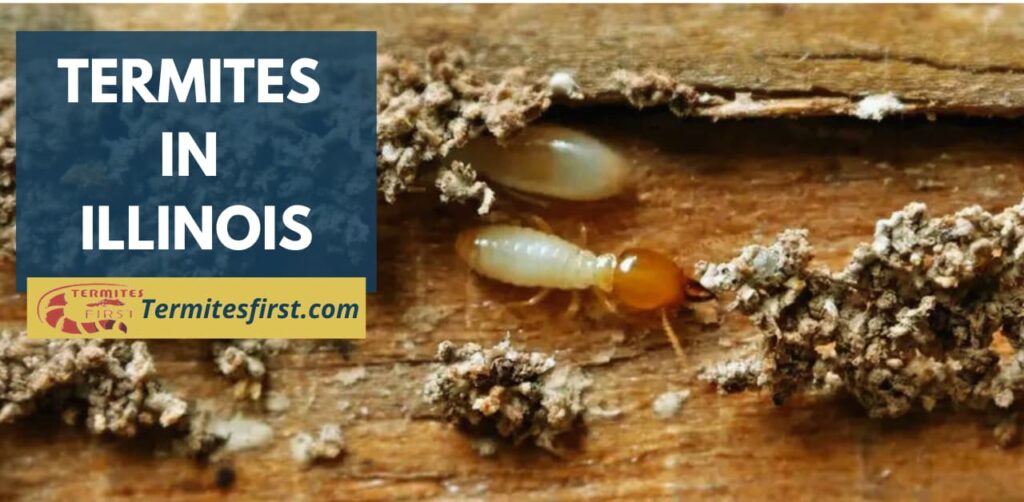
Conclusion:
Dealing with termites in Illinois can be a real headache. I’ve shared insights on the types of termites, how to spot an infestation, and effective prevention strategies. Regular inspections and proper home maintenance are key to keeping these pests at bay. Staying proactive saves time and money in the long run.
I encourage you to take action now. Implement the tips I’ve discussed to protect your home. Don’t wait for an infestation to hit before you act. Reach out to a pest control expert if you’re uncertain about your situation. Your home deserves the best protection against these destructive pests. Stay vigilant and keep your space termite-free!
FAQ’s:-
Illinois is primarily home to Eastern Subterranean termites. Drywood and Formosan termites can occasionally be found, though they are less common.
Look for mud tubes, discarded wings, or hollow-sounding wood. Early detection is crucial to prevent extensive damage.
To prevent termites, maintain a dry environment, fix leaks promptly, and ensure proper ventilation in crawl spaces. Regular inspections also help catch issues early.
Regular inspections help detect termite activity before it escalates. Early intervention can save you significant repair costs and protect your home’s integrity.
Store firewood at least 20 feet away from your home and elevate it off the ground. This reduces the risk of termites migrating to your property.
After an infestation, replace damaged wood and seal entry points. Consider treating the area with appropriate pest control measures to prevent recurrence.
While DIY treatments exist, professional pest control is recommended for effective eradication. Experts ensure thorough treatment and help prevent future infestations.

